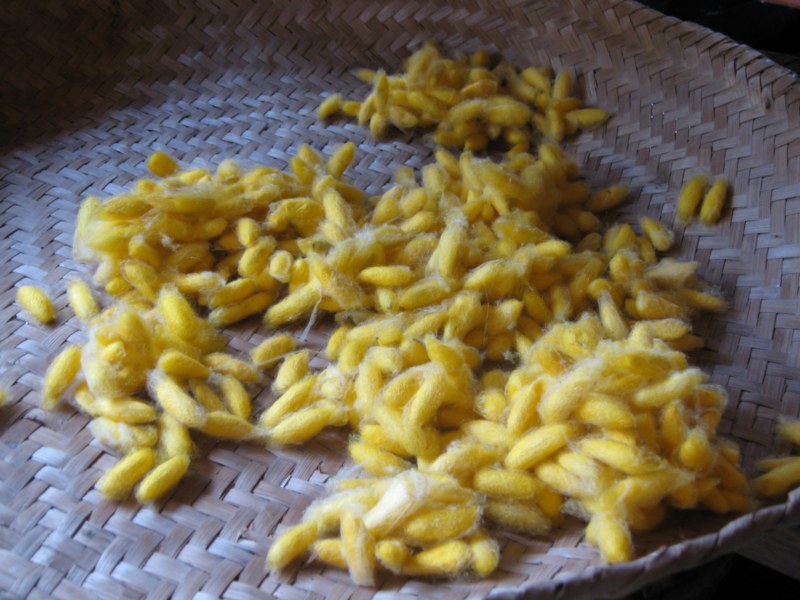A fine creation from a doomed insect.
It’s the finest, most delicate thread in the world and can be dyed and woven into smooth yet light clothes fit for an emperor let alone a modern man of distinction or a lady of style and discernment. This cloth is the bee’s knees, the cat’s pyjamas or, to more explicit, the beautiful lament of the doomed moth. Yet for thousands of years its existence was a closely guarded secret, hidden behind a thousand mile wall in the fastnesses of Northern China. Anybody who tried to take the secret out was instantly put to death.
According to legend, the Empress was sitting under a mulberry tree when a white egg-shaped cocoon fell into her tea and she observed a thread uncoiling from it. She picked up the end and started to wind it round her finger. It didn’t break and just kept on coming and coming.
Eventually, having leant how to dye, weave and fashion clothes from this precious thread, the Chinese traded it to the rest of the world via the Silk Road, an overland trade route though the legendary Samarkand and the deserts Central Asia to the emporia of Europe. The Venetian, Marco Polo followed the same route in the opposite direction to bring back knowledge of China to the west.
The Silkworm (Bombyx mori) is the caterpillar of a pallid moth native to Northern China. Over the centuries, it has been inbred to the point where it can no longer survive in the wild. It has a fat body and small wings and cannot eat or fly. It just reproduces and dies within five days, just enough time for the female to lay, on the underside of a mulberry leaf, 200 to 500 lemon-yellow eggs that eventually turn black and hatch into tiny caterpillars. The emerging silkworms are fussy eaters, dining only on mulberry leaves ( Morus alba) for 4 to 6 weeks until they are nearly 3 inches long, having moulted several times. When the silkworm has had its full of mulberry leaf, it spins a cocoon from a single strand of silk made of protein secreted from two salivary glands in the caterpillar’s head. This process takes 3 or more days. The silk covers a hard brown-shelled pupa, from which the adult moth emerges.
In Northern Laos they let the caterpillars grow, feed them on fresh mulberry leaves until they form cocoons and pupate. Some of pupae are allowed to hatch into a silk moths and produce a new crop of silkworms, but the rest are first steamed to kill the pupae (which would break the silk if they emerged as moths). Next the cocoon is dunked in hot water, (rather than tea), to dissolve the sticky coating that binds the silk. Then they wind the half mile strand of silk that makes up each cocoon on a small wheel, spin the threads from several cocoons together, dye them and weave them on a small loom to make the cloth. The Loatians do all of this in the space under their houses on stilts, the silkworms protected from predators in small mesh cages.
I wonder if the cocoon altered the taste of the Empresses tea.




a very interesting article. i have bred many other species of silk moths for 50 years but they do not spin the cocoons in a continuous thread so are not commercially viable.The atlas moth caterpillar spins an enormous cocoon to house the ten inch moth..Recently i have been breeding tropical butterflies and I and my friends have had much pleasure in watching them fly about and feed from the flowers in our conservatory.I had the pleasure of meeting you yesterday at Karens party,and enjoyed your account of her escapades at the hospital.
Thank you for this, Joyce. It was a please to meet you and had we spoken for longer, we might have found we shared an interest in exotic lepidoptera. I thoroughly enjoyed Karen’s party; a lovely occasion.